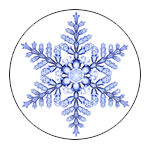
Our understanding of the molecular dynamics of growing crystals is quite primitive, and it is generally not possible to explain why even simple crystals develop their characteristic shapes. A case in point is the snow crystal, which grows into a puzzling variety of unusual morphologies under different conditions. Although snow crystals are the product of a well-understood phase transition, some basic aspects of their growth have remained unexplained for over 75 years.
Join Kenneth Libbrecht, Professor of Physics at Caltech, during this free interactive recording as he examines how the ice surface structure changes with temperature, how this affects ice crystal growth dynamics, and the resulting remarkable temperature dependence observed in snow crystal formation.
What You Will Learn
- Why snow crystals grow into such a diverse menagerie of morphological structures, including thin ice plates, slender columns, fern-like stellar dendrites, and many others
- The basic physics of faceted crystal growth, and how the distinctive molecular dynamics of the ice surface plays a key role in snow crystal formation
- How to grow designer snow crystals in the lab, including “identical twin” snowflakes, that illustrate the origin of complex structural symmetry
Co-Producer
Additional Resources
- Periodic Graphics: The chemistry of snow and ice—Chemical educator and Compound Interest blogger Andy Brunning explores water’s unique behavior when temperatures plummet in this infographic









